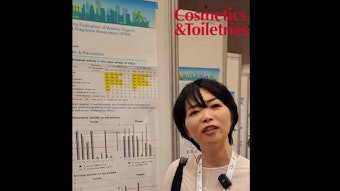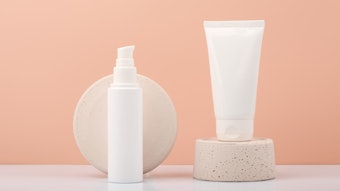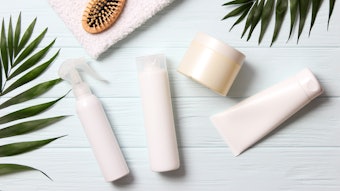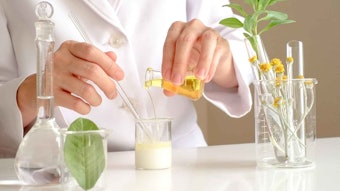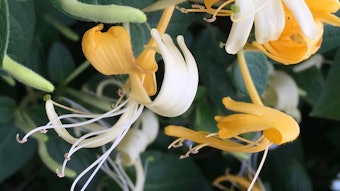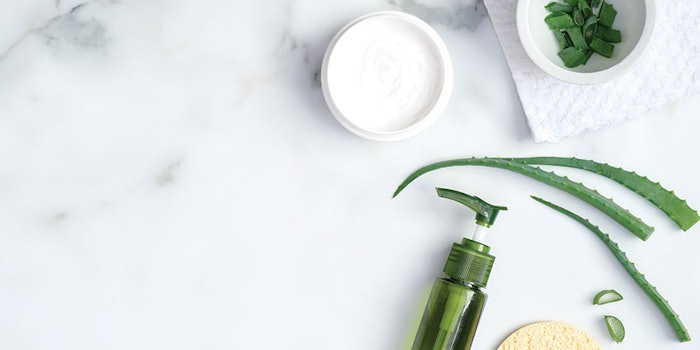
Log in to view the full article
Read this article in its entirety in the September 2020 digital edition. . .
*Adapted with permission from Kaneko, M. and Takeda, A. (2019). Isopentyldiol as a Moisturizer that Enables Preservative-free Formulations. Frag J 4 36-39.
Preservatives such as parabens and phenoxyethanol are used in cosmetic products to ensure microbe and mold resistance during manufacturing and storage. To this end, parabens and phenoxyethanol provide excellent safety and effectiveness. However, in recent years, formulators have sought to reduce the use of these traditional preservatives or omit them entirely to meet consumer demand for “preservative-free” products. This is due in part to reports of skin sensitization and irritation.
Therefore, ingredients that are more skin-friendly and deemed “safer” are growing in popularity.1 For example, formulations with sufficient preservation efficacy can be creating using alkanediols such as pentylene glycol, caprylyl glycol and ethyl hexyl glycerol as alternatives to conventional preservatives. Other approaches leverage moisturizers such as butylene glycol as auxiliary preservative agents to bolster nontraditional preservation technologies.2 The present article reports on a formulation approach using isopentyldiol, which has conventionally been employed in cosmetic products as a moisturizer and can serve as an auxiliary preservation agent to design “preservative-free” formulations.
Isopentyldiol
Isopentyldiol (see Figure 1) has been used in various cosmetic products including skin and hair care and makeup as a water-soluble moisturizer similar to butylene glycol and dipropylene glycol.3, 4 Although it provides sufficient moisturizing performance by itself, it has been shown to be more effective in combination with glycerol (see Figure 2).
Beyond its known moisturizing efficacy, however, isopentyldiol was explored in the present work for its effects on preservation by putting it to the test in combination with non-traditional preservatives toward the development of “preservative-free” formulas.
Preservative Test: Materials and Methods
For the present study, formulations employing the non-traditional preservatives phenoxyethanol, caprylyl glycol and ethylhexylglycerin were created, incorporating isopentyldiol as well as butylene glycol (BG) or methylpropanediol (MPO) moisturizers, for comparison.
Test measurements: Minimum inhibitory concentration (MIC) and fractional inhibitory concentration (FIC) measurements were taken to determine the preservation performance of these combinations using the checkerboard method.5 The FIC compares individual antimicrobial efficacies versus their combined efficacy, essentially to determine whether the “sum is greater than its parts.” While FIC measurements are more commonly used to evaluate interactions between two antimicrobial agents, they were used here to assess the effects of isopentyldiol with nontraditional preservatives.
For the checkerboard method, double-diluted test solutions were prepared, having a final concentration of between 2× the minimum inhibitory concentration (MIC) of each single agent and 0.3% as a reasonable lower limit for isopentyldiol, BG and MPO. For phenoxyethanol, caprylyl glycol or ethylhexylglycerin, a double-diluted solution was prepared, having a final concentration of between 2× the MIC of every single agent and 0.003% as a reasonable lower limit. Then, the growth state of the test microbes was checked for each test solution.
An example of the checkerboard method is shown in Figure 3. The results were interpreted using the fractional inhibitory concentration index (FICI). Each FICI was determined using the following equation:
FICI = FIC A + FIC B = CA/MICA + CB/MICB
where CA is the MIC of component A in combination with component B; MICA is the MIC of component A alone; CB is the MIC of component B in the combination with component A; and MICB is the MIC of component B alone.
Test microbes: Staphylococcus aureus, Pseudomonas aeruginosa, Escherichia coli, Candida, and Aspergillus niger served as the test microbes.
Preservative Test: Results and Discussion
The MIC of isopentyldiol, BG, MPO, phenoxyethanol, caprylyl glycol and ethylhexyl glycerol are shown Table 1. The MIC of isopentyldiol, BG and MPO were measured using solutions whose concentrations varied in increments of 5%; i.e., 20%, 15%, 10% and 5%. The MIC values of phenoxyethanol, ethylhexylglycerin and caprylyl glycol were measured using solutions whose concentrations varied in increments of 0.05%, such as 0.3%, 0.25%, 0.20%, 0.15%, 0.10% and 0.05%. Figure 4 outlines the results of the average minimum FICI for each test microbe. In addition, Table 2 shows the detailed measurement data for isopentyldiol.
A FICI number < 1 indicates the two antimicrobial agents—i.e., the preservative and the moisturizer—have a synergistic effect. Results indicated isopentyldiol had a synergistic effect with each of the antimicrobial agents against most bacteria species, as demonstrated by the average minimum FICI being < 1 in most cases.
From this, the authors concluded that isopentyldiol facilitated the preservation ability of the antimicrobial agents listed against the majority of microbes tested. It was therefore expected to serve as an auxiliary preservative agent that could reduce the levels of antimicrobial agents used in a formula.
Meanwhile, the average minimum FICIs for BG or MPO with each antimicrobial agent were approximately 1 (see Figure 4). . .
. . .Read more in the September 2020 digital edition. . .
References
- Hideki, M., et al. (2017). The viewpoint of formulation design for preservative-free and paraben-free cosmetics. J Soc Cosm Chem Jpn 51(1) 2-11.
- Araki, H. et al. (2018). An offensive defense. Minimizing preservatives, maximizing protection and resources. Frag J 46(11) 70-77
- Rigano, L. (2013, May 31). Sensory in cosmetics deciphered. Cosm & Toil 128(12), 874-883.
- Rigano, L. and Miriam, D. (2018, May 25). Hair trio triumph: Isopentyldiol for color care, strength and anti-frizz. Cosm & Toil 133(6) 58-68.
- Jain, S., et al. (2011). Antibiotic synergy test: Checkerboard method on multidrug resistant Pseudomonas aeruginosa. International Research Journal of Pharmacy 2(12) 196-198.






